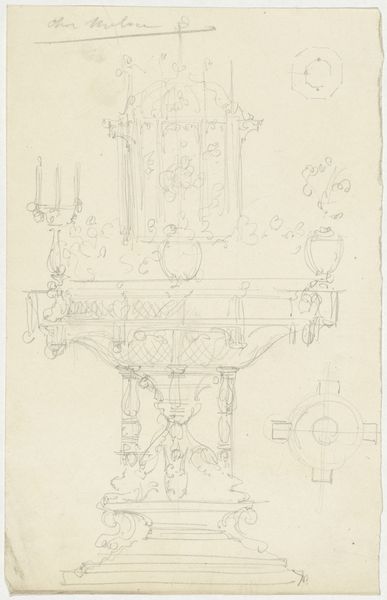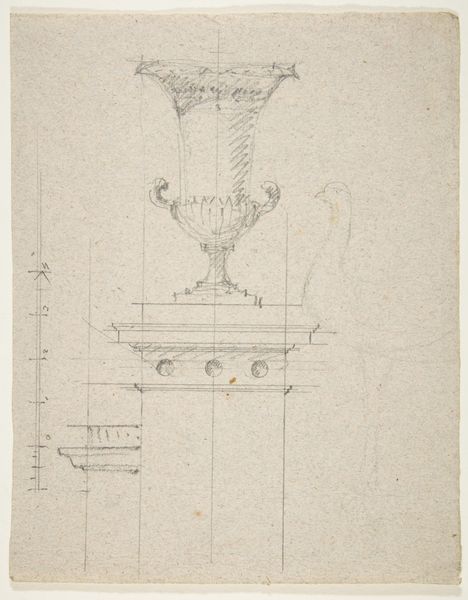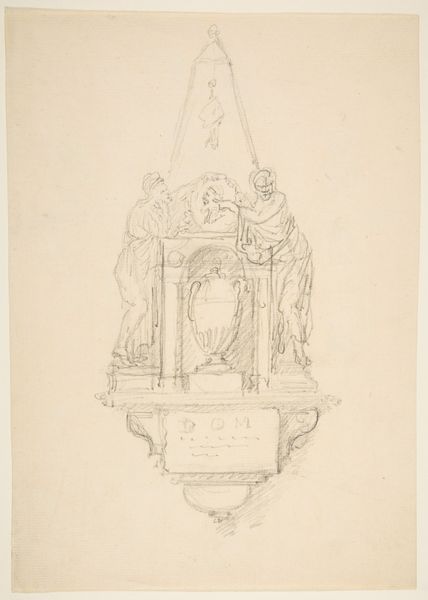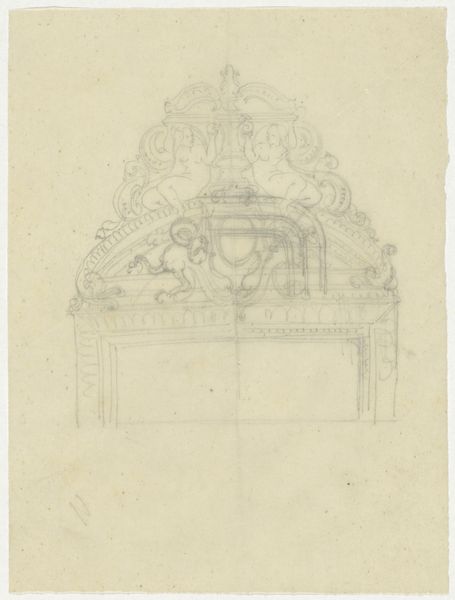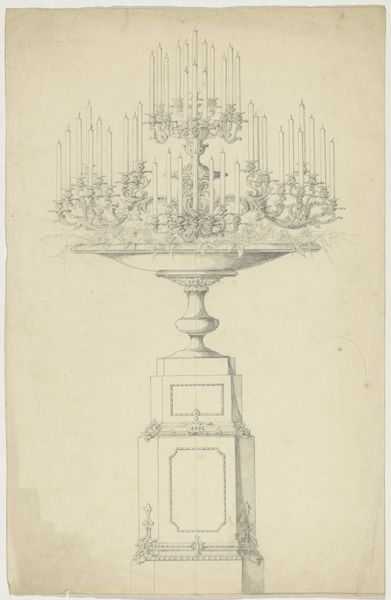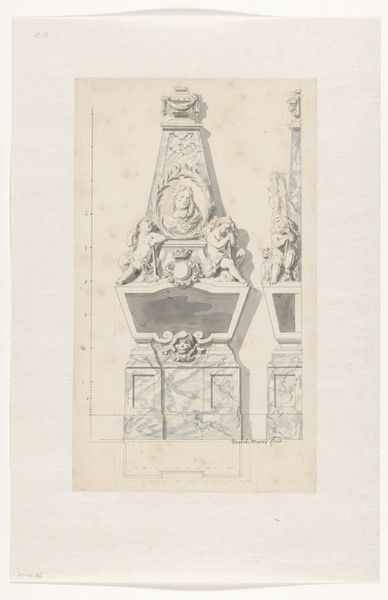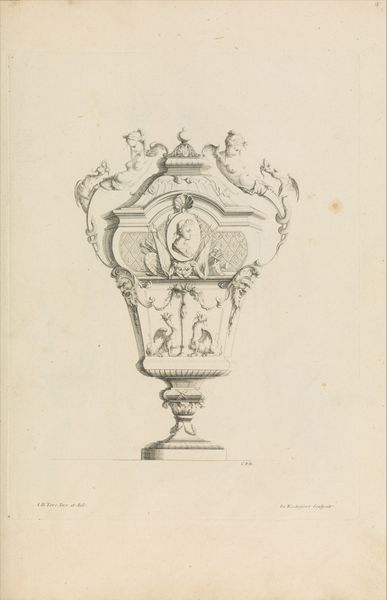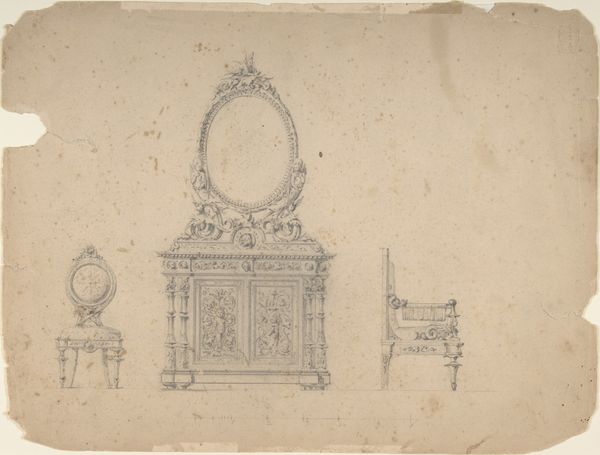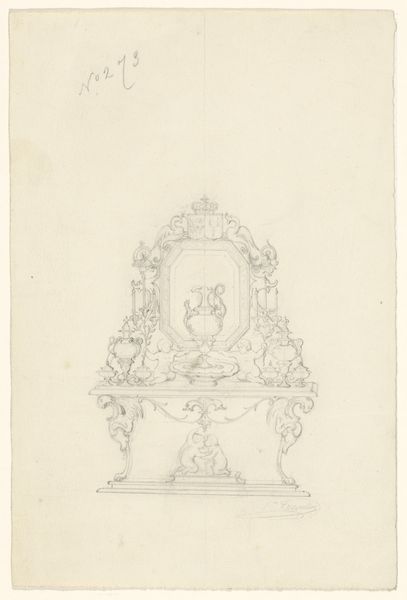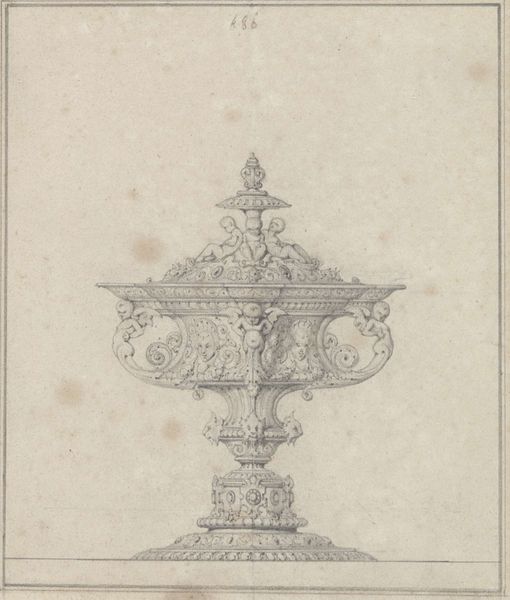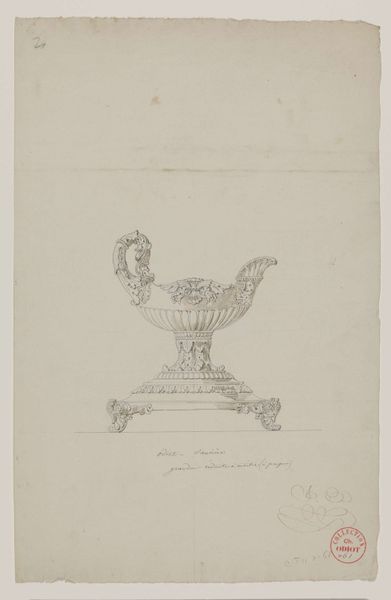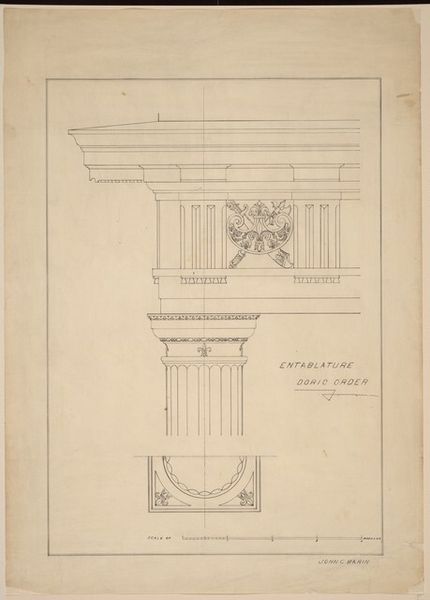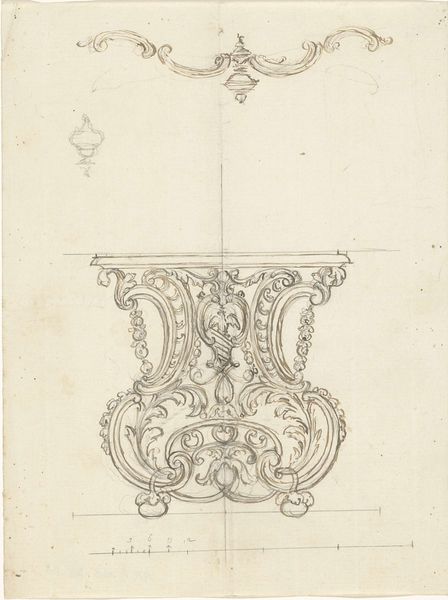
Design for a Vase with Rams' Heads in Renaissance Style 19th century
0:00
0:00
drawing, pencil
#
drawing
#
11_renaissance
#
geometric
#
pencil
Dimensions: sheet: 12 3/16 x 9 1/16 in. (31 x 23 cm)
Copyright: Public Domain
Curator: Here we have an anonymous 19th-century pencil drawing titled "Design for a Vase with Rams' Heads in Renaissance Style," currently residing at The Metropolitan Museum of Art. What are your initial thoughts? Editor: My first impression is one of airy elegance; despite its static nature, the sketch breathes with potential energy. There's an underlying sense of aspiration in the upward-sweeping lines of its design. Curator: Agreed. The artist emphasizes verticality to imbue the vase form with heightened grandeur. Look closely at how the meticulously rendered ornamental details—the foliage and, indeed, those prominent rams' heads—introduce rhythmic variation against the underlying geometric structure. Editor: Precisely. Rams are, of course, ancient symbols of virility and power, here employed to reinforce the vase's imposing presence. Yet, those curvilinear flourishes serve more than a decorative function; they mediate the transition between rigid form and fluid expression, speaking to ideas about vitality and transformation in that era. Curator: Observe, too, how the artist utilizes light and shadow through delicate gradations of tone, creating depth and dimensionality on the two-dimensional surface. This chiaroscuro lends a sculptural quality, almost preempting its future three-dimensional realization in, say, bronze or marble. Editor: And one imagines that the material realization is essential to fully conveying those symbolic resonances. The visual coolness of pencil implies both intellectual distance and latent potentiality. If this vase were realized in bronze, say, it would ground these ideas with materiality—amplifying their cultural weight. Curator: Indeed, one notes how the incompleteness of the sketch actually accentuates our engagement. Our minds intuitively rush in to complete it—in effect turning the design into potential that asks to be fulfilled in terms of historical association and tangible material reality. Editor: It highlights, too, that the true potential of any symbol isn’t fixed, it shifts with our historical position. Thanks to your insights, it seems there’s so much dynamism contained within the tentative lines of a sketch. Curator: Yes. One gains a special satisfaction seeing the past mediated through our unique understanding of what art might, or should, represent to each viewer, filtered as it were through design and technique.
Comments
No comments
Be the first to comment and join the conversation on the ultimate creative platform.
